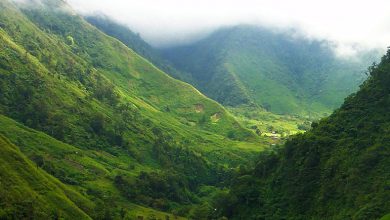Martial Law
Marcos initiated an ambitious spending program on public works; building roads, bridges, health centres, schools and urban beautification projects. He maintained his popularity through his fist term, and in 1969 he won a second term in office. However, his popularity declined precipitously in the second term. The peso, which was then being allowed to float, had reached a level of inflation which put an intolerable burden on the country’s economy. Moreover, President Marcos’s term of office was nearing its end, and under the 1935 constitution he was ineligible for re-election. The country, thus found itself in a difficult pre-electoral situation. The election itself, fought with passionate vigour, led to a mobilization of political feeling and a degree of public agitation which fostered internal intrigues and party rivalries. Social unrest was at a peak, with strikes and demonstrations directed by Jose Sison’s communist party, at a time when the tide of communism was rising in Southeast Asia. The armed forces, the NPA (New People s Army), gave their support to these activities, aggravating the climate of riot and rebellion. The Muslims of the south took advantage of these crises and the disarray of the central government to mount an armed rising which brought the area into a virtual state of war. Their object was to obtain the full rights of citizenship; Economic, cultural, political and religious which they had been denied since the beginning of the colonial period. The students too gave vigorous expression to their political and social discontents, with such effect that their demonstrations became known as the parliaments in the street.
In an attempt to end the state of violence, insecurity and general chaos which was devastating the country, President Marcos introduced martial law on 21 September 1972, and thereafter exercised direct government authority by presidential decrees. In spite of this an executive committee which had been appointed in 1971 produced a new constitution which was ratified by a national referendum on 15 June 1973. The new constitution is simple, establishing a parliamentary regime in place of the presidential system and providing for a single chamber, the Batasang Pambansa, elected for a six-year term. The President and Prime Minister are to be elected by and from the National Assembly; and the President has power to dissolve the Assembly and declare a new election.
In face of the need to restore public order, however, the democratic system of which the Filipinos were so proud was now in process of being destroyed. The opposition was disrupted by numerous arrests, including some of opposition politicians, journalists, critics, and activists; Benigno Aquino was among the first 30,000 who were detained under martial law. The civil service was purged to restore efficiency and honesty, the press was muzzled, a curfew was imposed between midnight and 4 a.m. With the absolute authority, the government was able to put the land reform into effect. Land was taken from those owning more than 7 hectares and redistributed on the basis of 3 hectares of irrigated land or 5 hectares of non-irrigated land for each farmer. At the same time the tax system was reformed so as to produce increased revenue for developing the national infrastructure (roads, schools, irrigation, etc.) and creating employment. In order to promote coordination between these various projects and the government, numerous specialized agencies were set up to provide advice and supervision in the social and public health as well as the economic fields. These agencies had branches in all the provinces, involving the participation of the provincial governors, who were appointed by the President.
In pursuit of this policy Victor Corpus and Dante, leaders of the Philippine Communist Party (PKP), which is of Maoist allegiance, were arrested in 1976, and Jose Sison was likewise arrested in 1979. Since then government forces have been involved only in occasional clashes with NPA guerrillas in isolated parts of the country. The MNLF (Moro National Liberation Front), however, remains active in spite of the government’s attempts since 1975 to negotiate an amnesty. In April 1977 4 million people voted in a referendum in the 13 southern provinces of the Philippines and rejected any idea of autonomy (though the result must be interpreted in the light of the fact that the MNLF urged voters to boycott the referendum). Thus the problem remains unresolved, a problem to which no one, since the 16th century, has been able to find a solution.
During the period of martial law the GNP rose from Php55 billion in 1972 to Php193 billion in 1980. The rise of tourism industry during this period contributed a lot to the economy’s growth; however, the administrators were willfully engaged in rampant corruption.
In order to appease the Roman Catholic Church President Marcos officially lifted the martial law on 17 January 1981 before the visit of Pope John Paul II. On the 16 June 1981 a presidential election was held which was boycotted by the political oppositions thus, President Marcos won and allowed him to have another six-year term.




